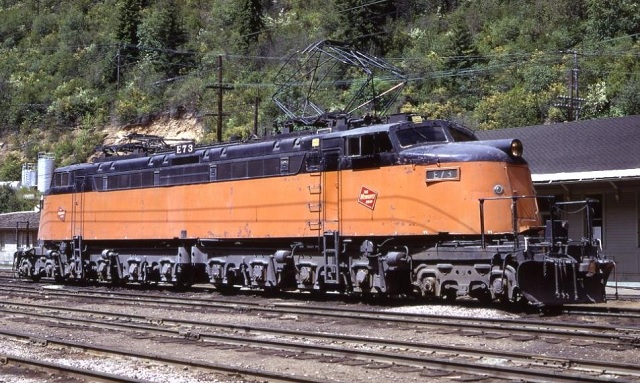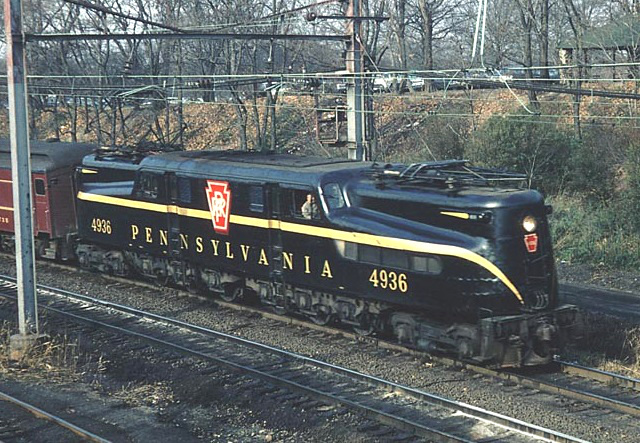December 02, 2014
Despite the advantages of the electric, like not having to pull its own fuel around, they never really caught on here in America the way they did overseas. Probably that's because of the one huge disadvantage electrics bring to the field: infrastructure requirements. Overhead wiring (or the less-used third rail method) to carry power to the trains had to be installed over the entire length of a run. The cost of maintenance could be prohibitive, particularly in areas where heavy snow occurred.
That doesn't mean it wasn't used here, though.
Milwaukee Road "Little Joe".

A helluva story behind these. General Electric originally built 20 of these beasts for an order from the Soviet Union... just as US/Soviet relationships went to hell and they were banned from exporting them. Eventually 12 of the locos made their way to the Milwaukee Road, where they were known as "Little Joe (Stalin)'s locomotives", which eventually got shortened to "Little Joe." With a 2-D + D-2 wheel arrangement (meaning two unpowered axles and four powered + four powered and two unpowered), the Little Joes weighed in at roughly half-a-million pounds and generated about 5100hp. By comparison, the famous EMD F7 freight engine generated 1500hp. The Little Joes ran out in Montana and Idaho on the Milwaukee Road's Rocky Mountain Division until electric service was retired in 1974. One survives in running condition at the Illinois Railway Museum, and four others of the 20 survive in non-running shape.
Pennsylvania Railroad GG1

The GG1 entered service in 1935, and wasn't finally retired until 1983. In between, they were certainly the most distinctive locomotive on America's rails. Limited to use on the East Coast, they moved both passengers and freight exclusively for the Pennsy, though successor lines (Penn Central, Conrail and spinoffs, Amtrak) continued to use them as well. They weighed 475000 pounds, generated a continuous 4600hp, though that could increase to 8000hp for short lengths of time. Over 130 GG1s were built, 15 of which (and the original prototype known as "Rivets") still exist. None of them are in running condition for many reasons, not least of which was the use of PCBs in their transformers.
So there ya go, a couple of electric locomotives for your perusal.
Posted by: Wonderduck at
11:07 AM
| Comments (9)
| Add Comment
Post contains 445 words, total size 3 kb.
Posted by: Ben at December 02, 2014 02:30 PM (S4UJw)
Makes me wonder, in the (unlikely?) event we get our renewable energy situation figured out, whether we'll see a resurgence in this style of locomotive.
Posted by: GreyDuck at December 02, 2014 08:46 PM (AQ0bN)
Posted by: Steven Den Beste at December 02, 2014 11:08 PM (+rSRq)
Posted by: Wonderduck at December 03, 2014 12:54 AM (jGQR+)
Posted by: Steven Den Beste at December 03, 2014 01:09 AM (+rSRq)
Posted by: Wonderduck at December 03, 2014 01:57 PM (jGQR+)
"Economically speaking, it made sense to buy more expensive locomotives which could run on cheaper track."
...was what I wrote.
Posted by: Steven Den Beste at December 03, 2014 07:25 PM (+rSRq)
Posted by: Wonderduck at December 03, 2014 09:58 PM (jGQR+)
Except for raw URLs. That will set me off.
Posted by: Wonderduck at December 04, 2014 10:51 AM (jGQR+)
47 queries taking 0.3501 seconds, 285 records returned.
Powered by Minx 1.1.6c-pink.









